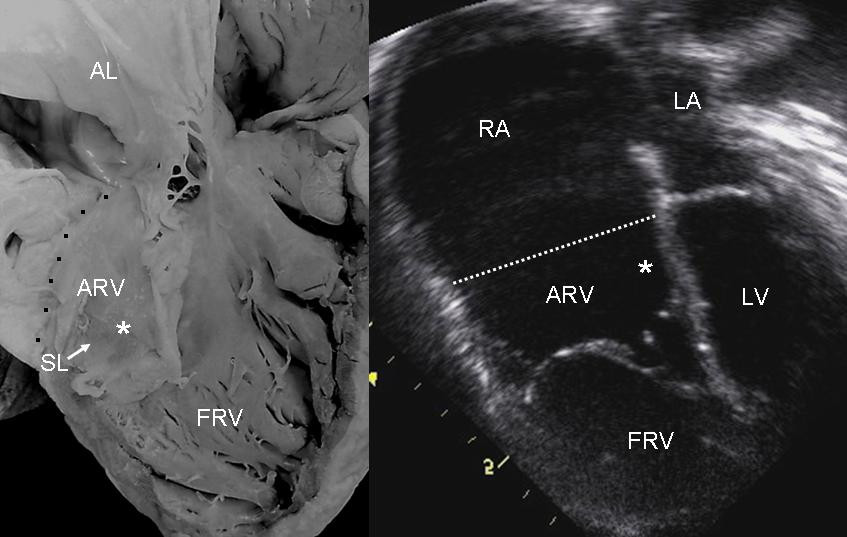Ebstein Malformation

Ebstein's malformation is a rare congenital cardiac anomaly characterized by rotational displacement of the septal and inferior leaflets of the tricuspid valve such that they are hinged within the right ventricle, rather than as expected at the atrioventricular junction.
Epidemiology
Prevalence is estimated at 1/50,000-1/200,000. Both sexes are equally affected.
Clinical description
Clinical presentation is heterogeneous and depends on the severity of the lesion (extent of tethering of the antero-superior leaflet across the normal valvar orifice), and the degree of dysfunction of the right ventricle. Patients with minor forms of the disease remain asymptomatic or may present with an incidental murmur, exertional dyspnea, fatigue, or palpitations. Those with severe forms can present at various ages with arrhythmias, cyanosis, and sometimes cardiac failure. Those with the most severe malformations present as neonates, often with so-called ``wall-to-wall'' hearts. During adulthood, supraventricular tachycardia can also be observed, a proportion of patients also having Wolff-Parkinson-White syndrome (see this term). The malformation is often associated with other cardiac lesions, such as atrial or ventricular septal defects, patency of the arterial duct, and pulmonary stenosis.
Etiology
Etiology is unknown. In some cases, maternal ingestion of lithium was associated with the disease.
Diagnostic methods
Diagnosis is based on cross-sectional or 3D echocardiography, which reveals the rotational displacement of the leaflets, the extent of abnormal tethering of the antero-superior leaflet, the extent of thinning of the atrialized inlet component of the right ventricle, and the degree of regurgitation or stenosis of the abnormal valve. The electrocardiogram can reveal right atrial hypertrophy, right bundle branch block, and supraventricular tachycardia. Radiography shows any cardiomegaly, and cardiac MRI shows the full extent of the valvar abnormalities.
Differential diagnosis
The major differential diagnosis, particularly during fetal life, is dysplasia of the leaflets of the tricuspid valve. This, as can Ebstein's malformation if associated with pulmonary atresia, can lead to gross thinning of the walls of the right ventricle which should not be confused with Uhl's anomaly (see this term). The severest forms of Ebstein's malformation can produce an imperforate tricuspid valve, which must be distinguished from tricuspid atresia (see this term).
Antenatal diagnosis
Antenatal diagnosis is now possible with fetal echocardiography that reveals hydrops fetalis.
Management and treatment
Medical treatment relies on inotropic agents (in case of cardiac failure) and antiarrhythmic drugs (in case of tachyarrhythmia). Definitive treatment is surgical and consists of reconstructive surgery prior to the onset of cardiac failure. If the valve is too malformed, replacement is the only option.
Prognosis
Asymptomatic patients, and patients with mild forms of the disease, have a normal life expectancy. Patients with severe forms of the disease, particularly those presenting during the fetal period or as neonates, have an increased risk of death due to cardiac failure, including at birth or during physical exercise.